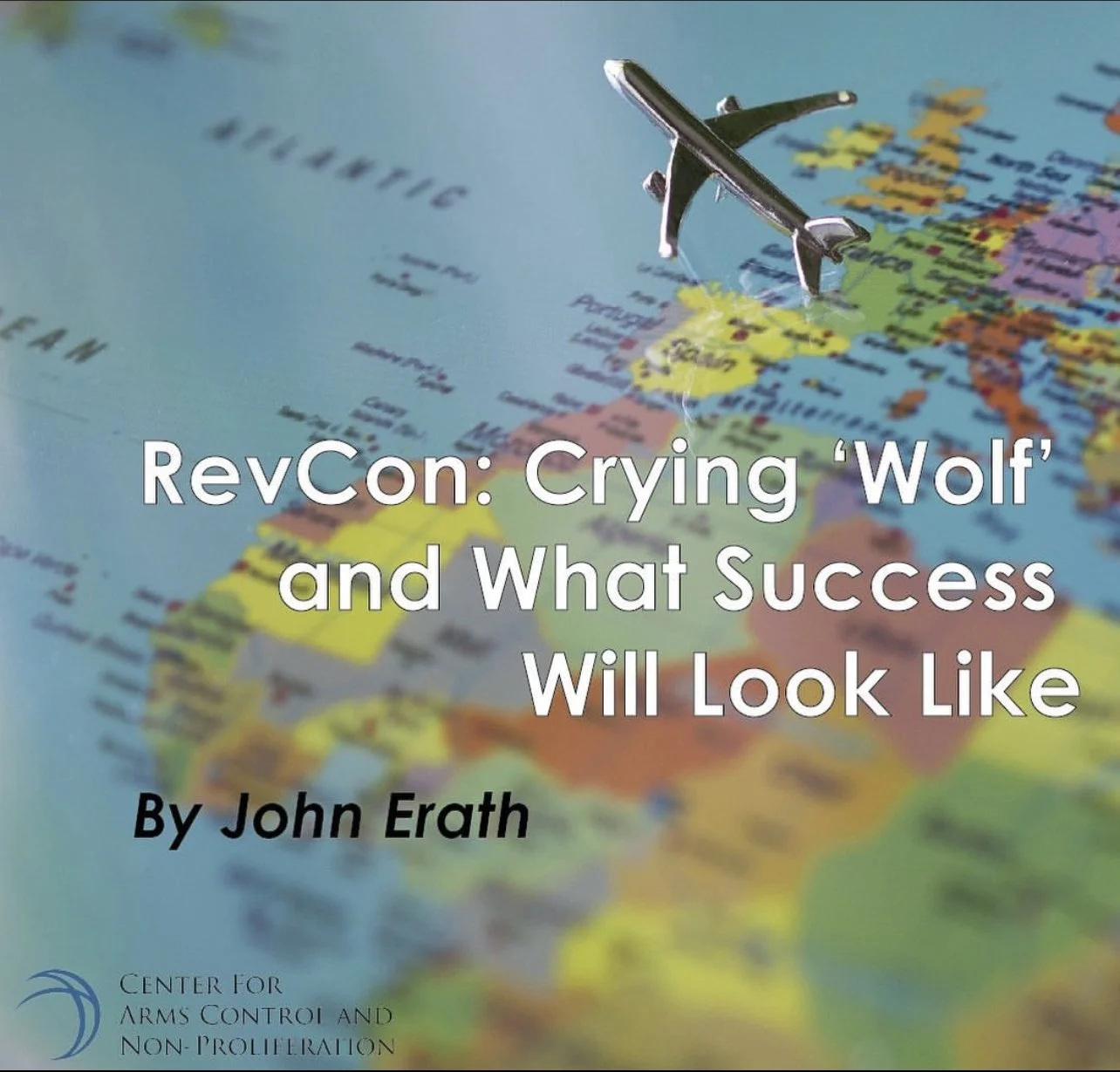RevCon: Crying ‘Wolf’ and What Success Will Look Like
By: John Erath, Senior Policy Director, Center for Arms Control and Non-Proliferation
One of the major advantages of working at the Center is the way that my colleagues can make my job easy. I had been thinking of writing a post for this blog on the opening of the NPT Review Conference (RevCon) in New York this week but was having trouble coming up with an angle. Then, a message from our Communications Director, Anna Schumann, showed up in my inbox yesterday with some thoughts on a New York Times op-ed. The authors note that political fundraising has moved to a “churn and burn” model, always seeking to incite the perception of crisis to squeeze money out of contributors. As potential donors receive increasing numbers of such messages, they become desensitized, ultimately eroding the effectiveness of the practice.
Naturally, I thought of how this might apply to arms control and Review Conferences. When considering the question of how to manage the risks associated with the world’s most dangerous weapons, there is always a sense of extreme danger that is often expressed in terms such as “critical moment,” or “greatest danger since the Cold War.” In the run up to the 2000 RevCon — often considered one of the more successful — Arms Control Today published a highly pessimistic analysis of the trends of the time — at a moment when the United States and Russia were eliminating nuclear weapons as fast as their capabilities would allow.
This is a challenge for those of us seeking to promote sensible arms control. We want to call attention to challenges and issues that arise but need to strike balance that avoids the proverbial cry of “wolf” at every turn. A few years ago, we were concerned by Russia violating the Intermediate-Range Nuclear Forces (INF) Treaty and causing its collapse, but that has not yet led to an expansion in the forces previously banned by that treaty and has led to possibly constructive suggestions that the INF Treaty be replaced by a global framework. This year, however, the RevCon actually does take place at a singular juncture.
After multiple COVID delays, the 2020 RevCon was held in the shadow of the first war waged by a nuclear power to be accompanied by specific threats to use nuclear weapons to achieve its war aims. Russia’s aggression has put the world on a dangerous course that has raised the possibility of nuclear war to an unprecedented level. Although many RevCon participants will remain concerned about implementing Article VI, which requires nuclear states to engage in good-faith negotiations to disarm, or the possibility of a Middle East Nuclear Weapons Free Zone, the conference will need to rise above the normal noise level of such concerns to succeed. This RevCon will be remembered for how it does or does not address the additional risks engendered by the war against Ukraine.
Success at RevCons is generally measured by whether consensus is reached on a Final Document. That of 2000 produced a plan of action; 2005 did not, leading the latter to be deemed a failure. Such a metric will not work this year. Given that it will be all but impossible to get Russia to sign off on a conclusion that condemns its nuclear threats, any conceivable agreed Final Document would necessarily give Moscow a pass for its misbehavior. The goal this year should be not to seek such an outcome but instead to have as many participating governments as possible condemn Russian aggression while highlighting the lesson that should be learned from the war in Ukraine: we are safer with fewer nuclear weapons in the world, not more.
This article was first published by the Center for Arms Control and Non-Proliferation. It was reformatted and published in this edition with the author’s permission. You can view the original here.
